French architect, engineer and designer, Jean Prouvé’s was a pioneer in metal prefabrication, but also a consultant for some protagonists of modern architecture, including Le Corbusier.

Image source:https://en.wikipedia.org/wiki/Jean_Prouv%C3%A9#/media/File:Jean_Prouv%C3%A9_(1981).jpg
Working with Metal
Jean Prouvé was born in Paris, in 1901. He began his career with the construction of wrought-iron gateways, railings and windows. Yet, from 1924 onwards Jean Prouvé designed furniture. Further, he wanted to make art and design readily accessible and link art to industry. However, he gradually abandoned the decorative style of the time to focus on smooth surfaces and folded metal plates. Thus, he used these materials to design storefronts, elevators and furniture lines. During this time, he became interested in optimizing techniques and materials, especially in the field of metallurgy.
Prouvé did not graduate in architecture or engineering, something that he took to remark – not without a certain air of pride, as even the incipit of his “myth-biography. ” In his own words, “I’m not a worker. In the end, I started from there and I think that everything I did in life, I did it very simply, without asking myself deep questions.”
A rough susceptibility that complemented his role as a maître-ferronnier, or an iron sheet technician. In short, Prouvé was a homo faber, or a blacksmith who spent most of his time in his workshop, rather than around the Parisian museums or cafés. From 1957 to 1970, Prouvé lectured at the Conservatoire des Arts et Métiers in Paris. Finally, he died in Nancy, in 1984.
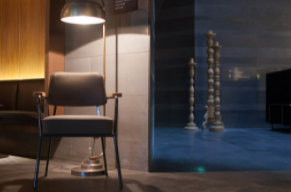
Image source: https://search.creativecommons.org/photos/d86616fe-1933-41b0-ada0-4b9c5a1aca91 by triplefivechina
Body of Work
Jean Prouvé’s favourite material to work with was aluminium, usually in the form of corrugated sheet metal and molded elements. Among his major works, there are La Maison Tropicale and Vitra Petrol Station.
La Maison Tropicale, is a prefabricated house designed by Prouvé using aluminium, which followed his vision of low-cost housing option for French bureaucrats at the time. From 1949 to 1951, Prouvé designed and manufactured three prototype Maisons Tropicales for West Africa. However, his idea was not very successful, and thus, the Tropical Maison remains the only expression of his radical architecture vision. In addition, all components of the structure are lightweight and flat, so that they could be neatly packed into a cargo plane.
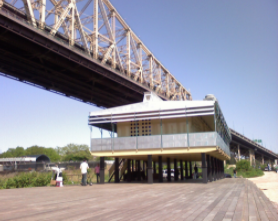
Image source:https://search.creativecommons.org/photos/4d217313-f377-402c-a0ac-88565301c331 by stan
Vitra Petrol Station, on the other hand, was designed in 1953 with the help of his brother Henry. The structure is one of the first manufactured petrol stations and has angular aluminum components with perforated sheets. Further, the supporting structure and the wall’s frame are clearly differentiated from one another, which is a distinction reinforced by the color scheme. Many of Prouvé’s buildings were made with prefabricated metal components, so that they could have regular and structural qualities almost equal to his table designs. This demonstrated his continued adhesion to the tectonic principles in the process.
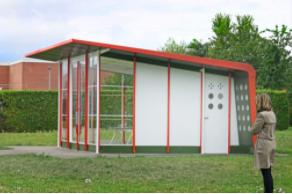
Image source:https://search.creativecommons.org/photos/aaee8384-b6e6-45d3-b2c5-3de8826fd20a by corno.fulgur75
The Style of a Blacksmith
Prouvé developed technologies from industry to architecture, without losing the aesthetic qualities of such. He is an example of committed engagement with prefabrication and industrialization, and also served as an abundant source of inspiration both for his peers and students alike. Additionally, his style is different from the Bauhaus steel furniture of the time, due to his rejection of the steel tube technique. Instead, Prouvé believed in the durability and form of sheet metal. When he returned to Nancy to open his own workshop, he experimented with a simpler, less-ornamental style.
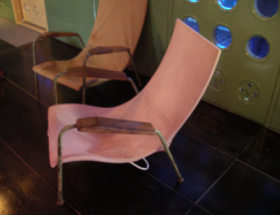
Image source::https://search.creativecommons.org/photos/60903b98-6bf8-4581-9a2b-1fbb9f000a6c by jmgobet
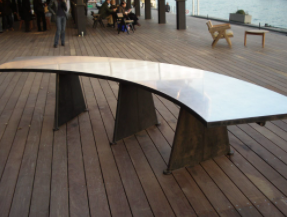
Image source:https://search.creativecommons.org/photos/4925acd3-04a8-45b6-bab4-0f77bc489797 by jmgobet
Prouvé experimented with both electric welding and the application of different techniques of construction. He also resorted to sheet-steel which allowed for a structure of exceptional resistance, such as in his reclining chair. His interest in lightness and industrialization applied to architecture came from the need of affordable, modern and mass produced housing among the post-war population of Europe. Above all, his interests were driven by his engagement with technological and social advances of his time.
Info sources:
https://www.detail-online.com/blog-article/jean-prouve-1901-1984-i
https://www.patrickseguin.com/en/designers/biography-jean-prouve/
https://www.vitra.com/en-us/campus/architecture/architecture-petrol-station
